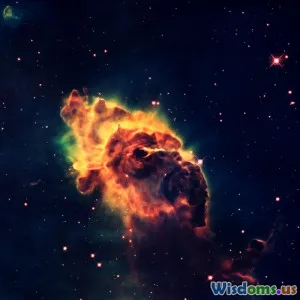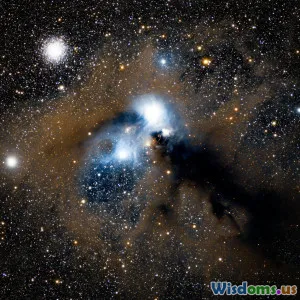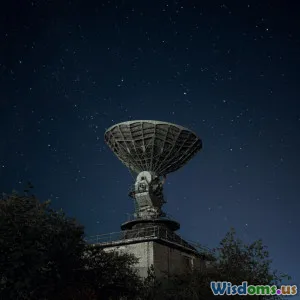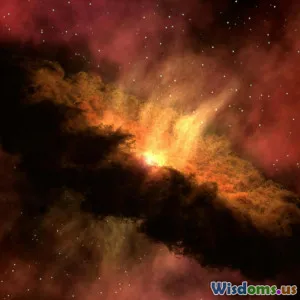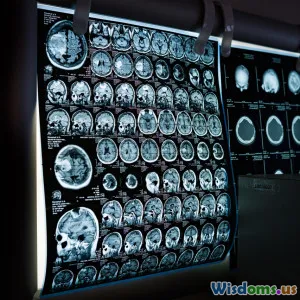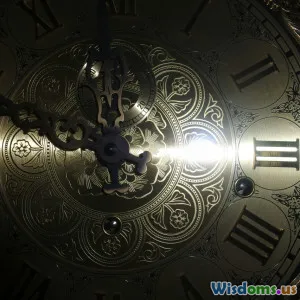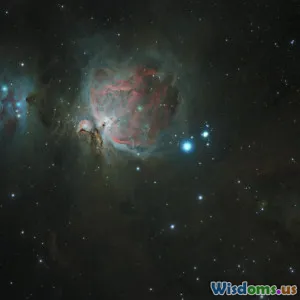
Unveiling the Mystery of Dark Matter and Stars
9 min read Explore the enigmatic roles of dark matter and stars in the cosmos, unraveling mysteries that shape our universe. (0 Reviews)
Unveiling the Mystery of Dark Matter and Stars
The night sky has fascinated humanity for millennia — a tapestry glittering with stars, planets, and cosmic phenomena that hint at a vast, intricate universe. But lurking behind this luminous façade is one of the most perplexing cosmic enigmas: dark matter. Invisible yet influential, dark matter is critical for understanding the formation and behavior of stars, and by extension, the universe itself. In this article, we embark on a journey to unravel the profound connection between dark matter and stars, diving deep into the latest discoveries, scientific theories, and cosmic mysteries.
What is Dark Matter? An Invisible Cosmic Architect
Dark matter is a form of matter that does not emit, absorb, or reflect light, making it undetectable by conventional telescopes. Despite this invisibility, scientists estimate that it constitutes about 27% of the universe's total mass-energy content, outweighing ordinary atoms that form stars and planets (which make up just about 5%).
The Evidence for Dark Matter
While dark matter itself remains unseen, its presence is inferred through various indirect observations:
-
Galaxy Rotation Curves: Stars orbiting galaxies move at speeds that, according to Newtonian physics, should throw them out of the galaxy. The extra gravitational pull from dark matter halos explains these fast rotations.
-
Gravitational Lensing: Massive objects like galaxy clusters bend the path of light from distant galaxies. The amount of bending suggests far more mass than visible matter accounts for.
-
Cosmic Microwave Background (CMB): Patterns in this ancient radiation reveal the universe’s composition, supporting a large dark matter fraction.
Astrophysicist Vera Rubin’s pioneering work in the 1970s on galaxy rotation curves was fundamental to popularizing the dark matter theory. “The motion of stars was telling us a secret we couldn’t see with the naked eye,” she said, highlighting how reality often lies beyond direct perception.
Stars: The Beacons of Ordinary Matter
Stars are massive spheres of plasma that generate energy through nuclear fusion at their cores. They are the building blocks of galaxies, responsible for producing the heavier elements essential for planets and life.
Formation of Stars
Star formation begins within large clouds of dust and gas known as molecular clouds. Under the gravitational pull, parts of these clouds collapse, condensing material that eventually ignites fusion processes at high temperatures and pressures.
The Intersection: How Dark Matter and Stars Interact
Though dark matter does not interact with electromagnetic forces like ordinary matter, its gravitational influence shapes the cosmic environment where stars form and evolve.
Dark Matter Halos as Stellar Nurseries
One of dark matter’s pivotal roles is in structuring galaxies. Galaxies, including our Milky Way, are enveloped by vast halos of dark matter.
-
Gravitational Wells: These halos create potential wells that pull in gas and dust, fostering conditions necessary for star formation.
-
Galaxy Stability: Without the hidden scaffolding of dark matter, galaxies would lack the mass required to hold together against the high speeds of constituent stars.
For instance, the dwarf galaxies orbiting the Milky Way have high dark matter proportions, which explains their ability to retain stars despite their relatively low visible mass.
Dark Matter and Star Evolution Models
Recent research explores how the distribution and density of dark matter can affect the lifecycle of stars. Some models propose "dark stars," hypothetical early stars powered by dark matter annihilation, which could have been much larger and longer-lived than regular stars, influencing the universe’s reionization history.
Cutting-edge Insights: Modern Observations and Experiments
Mapping Dark Matter Through Stellar Motions
Telescopes such as the Gaia spacecraft map the precise motions of millions of stars in the Milky Way. By analyzing deviations in star trajectories, astronomers reconstruct the invisible dark matter distribution.
Direct Detection Efforts
On Earth, experiments like XENON1T and LUX-ZEPLIN attempt to detect dark matter particles—particularly WIMPs (Weakly Interacting Massive Particles)—interacting with detector materials. While no conclusive detection yet exists, these experiments continuously enhance our understanding and narrow down possible candidates.
Dark Matter’s Role in Cosmic Evolution Models
Computer simulations like the Illustris and Millennium simulations integrate dark matter physics with baryonic matter (ordinary matter). These models successfully reproduce large-scale structures observed in the universe and galaxy formation patterns.
Why Understanding Dark Matter and Stars Matters
Unraveling this mystery is more than academic curiosity; it shapes our fundamental comprehension of the universe. Understanding dark matter and star formation helps answer big questions:
-
The Universe’s Fate: Dark matter influences cosmic expansion and the ultimate destiny of the cosmos.
-
Galactic Dynamics: It explains why galaxies maintain their structures and how they evolve.
-
Origins of Life: Stars forge chemical elements that form planets and organic molecules.
As cosmologist Neil deGrasse Tyson eloquently stated, "For me, I am driven by two main philosophies: know more today about the world than I knew yesterday, and lessen the suffering of others. You'd be surprised how far that gets you."
By understanding the depths of space and matter, we expand human knowledge and potentially unlock future technologies.
Conclusion: Embracing the Cosmic Unknown
Dark matter and stars are intertwined players in the cosmic theater. While stars shine brightly and reveal much about origins and destiny, dark matter remains an invisible puppeteer orchestrating the grand ballet of galaxies and cosmic evolution. As telescopes grow ever more powerful, and experiments more sensitive, we edge closer to unveiling this profound mystery.
Every piece of data collected, every theory refined, fuels humanity’s quest to comprehend not just what the universe is—but the remarkable forces that bind it together beyond the light. It is an invitation for all curious minds to peer into the darkness and illuminate the unknown.
The cosmos awaits our understanding.
References
- Rubin, V.C., & Ford Jr, W.K. (1970). Rotation of the Andromeda Nebula from a Spectroscopic Survey of Emission Regions. Astrophysical Journal.
- Planck Collaboration (2018). Planck 2018 results. VI. Cosmological parameters. Astronomy & Astrophysics.
- Gaia Collaboration (2018). Gaia Data Release 2: Mapping the Milky Way. Astronomy & Astrophysics.
- Peter S. (2012). Dark matter in the Milky Way. Physics Reports.
- Freese, K., Spolyar, D., & Aguirre, A. (2020). Dark Stars: Formation, Properties, and Death. Annual Review of Nuclear and Particle Science.
Rate the Post
User Reviews
Popular Posts










